Look around at the rapidly evolving EV market and it can feel like it’s impossible to keep up with the latest releases. It seems like every month, another major manufacturer announces a new model or unveils its plans for the future, promising more range, more power, and more tech to outgun its ever-changing field of rivals. In that context, the Hyundai Ioniq 5 is far from being the new kid on the block, having been on the market since the 2022 model year. Still its looks, capabilities, and pricing keep it an attractive option, with the 2025 Ioniq 5 starting from $42,600.
Starting from the base model, the Ioniq 5 comes in five different trims, each offering an increase in range, power, extra features, or a combination thereof. Separately priced, the high-performance Ioniq 5 N boasts 601 horsepower and race-oriented tires, beginning at $66,200. Regardless of whether you’re considering the entry-level or top-tier models within the Ioniq 5 lineup, numerous competitors can be found among rival brands as well as within Hyundai’s own offerings.
We have compiled 10 highly competitive alternatives that deserve your consideration before heading to a dealership to purchase a new Ioniq 5. Each option includes present pricing information, with all costs listed without additional fees except where noted differently.
Read more:
10 Reasons Why Investing in a Tesla Makes Sense
Kia EV6
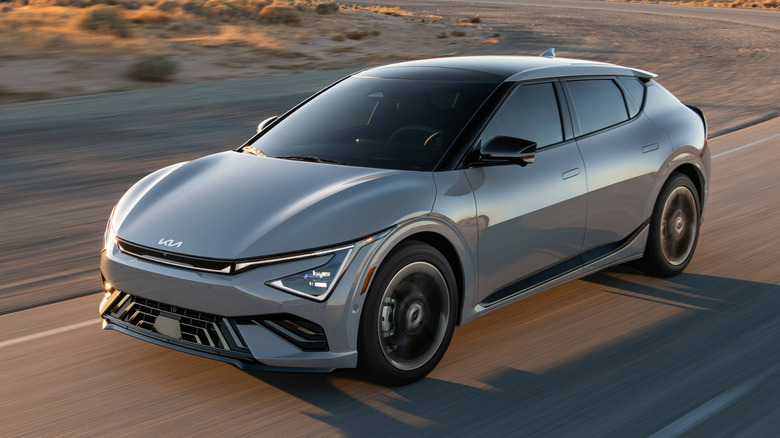
Kia has
offered its EV6 a series of enhancements
For the 2025 model year, both increased power output and extended range will be available even in base trim levels. The exact numbers depend on the chosen battery pack; however, anticipate around 300 miles of driving distance along with at least 167 horsepower. At its peak configuration as an EV6 GT variant, it delivers upwards of 600 horsepower, positioning itself firmly among high-performance electric vehicles like the Ioniq 5 N. Pricing for the EV6 lineup aligns closely with that of the Ioniq 5, reflecting deliberate design parallels between these models.
The two cars use the same underlying structure and power source, along with identical optional all-wheel-drive systems. Their primary distinctions lie in their interiors, available features, and design — aspects where the EV6 shines brightly for many buyers. Specifically, the Ioniq 5’s appearance tends to evoke strong reactions; it has a futuristic hatchback aesthetic not commonly seen elsewhere. On the contrary, the Kia presents a style more consistent with its brand’s overall aesthetics, making it less instantly recognizable as an electric vehicle. This characteristic may sway certain consumers toward choosing the Kia over its counterpart.
Chevrolet Blazer EV
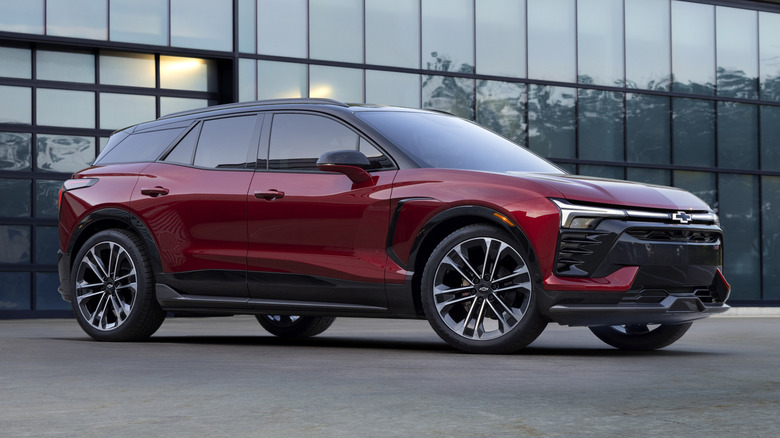
The Ioniq 5’s hatchback design stands out with its uniqueness and departs significantly from the conventional SUV and crossover aesthetics that dominate today’s automotive market. For those seeking an electric vehicle (EV) with subtler styling, the Chevrolet Blazer EV presents a compelling alternative. It mirrors the aesthetic of Chevy’s gasoline-powered SUVs, much like how the Kia EV6 offers understated visuals that may appeal to particular customers—especially first-time EV adopters preferring vehicles that look familiar parked at home. In addition to maintaining this recognizable exterior style, the Blazer EV ensures familiarity inside the cabin for former owners of recent Chevrolet SUV models. This contrasts sharply with the retro-modern interior found within the Ioniq 5.
The Blazer EV provides a comparable driving distance to the Ioniq 5, offering up to 279 miles for all-wheel drive versions and reaching up to 324 miles for those equipped with rear-wheel drive. The Chevrolet model comes at a higher price point; the entry-level vehicle retails for $54,200 before incentives or can be had for around $48,670 after applying discounts like an electric-vehicle rebate.
Volvo EX40
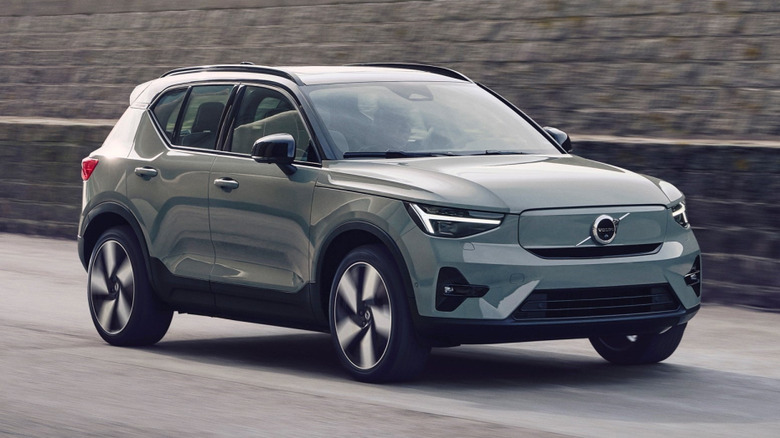
In 2025, the previous model known as the XC40 Recharge will be retitled as the EX40. This vehicle remains an emission-free alternative to the XC40, though it comes at a somewhat higher cost due to its battery system. Starting at $53,795 for the basic version, this makes it comparable to the Ioniq 5’s Limited edition, priced at $54,300 for 2025. The Volvo features a standard single-engine setup delivering 248 horsepower along with up to 296 miles of driving range. Additionally, customers can opt for a twin-motor configuration for an additional $1,750. While adding another engine reduces the EX40’s maximum range to just under 260 miles—a decrease relative to the Hyundai—the car balances this out by offering robust performance capable of producing 400 horsepower.
Volvo is renowned for its high-quality yet unassuming interiors, and the EX40 continues this tradition by including an extensive array of technology features as standard equipment. All trim levels come equipped with a wireless smartphone charger, a 12.3-inch digital instrument cluster, and a 9.0-inch central touch screen, which runs on the same Android operating system used in other Volvo vehicles. Additionally, the Volvo emblem may carry greater cachet compared to the Hyundai; however, should status be paramount, numerous alternative luxury brands could also meet those needs.
BMW i4
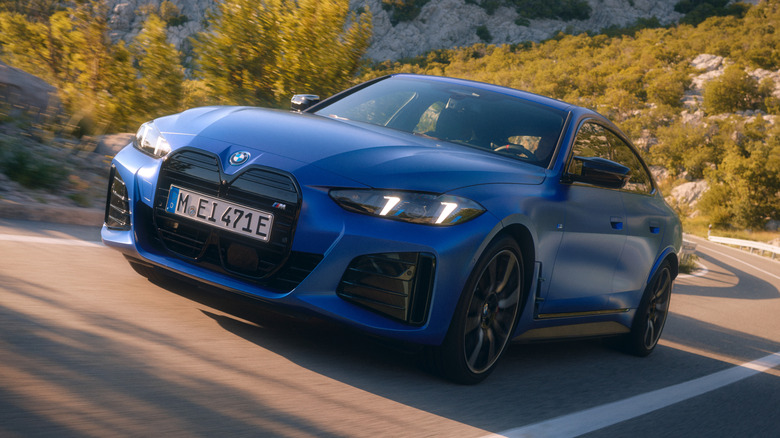
Whether rightly or not, the BMW emblem continues to command a premium price for numerous purchasers who perceive it as more prestigious compared to its rivals. Nonetheless, the i4 offers great value within its pricing bracket, irrespective of the brand’s prestige, thanks to its dynamic handling, upscale yet comfortable interior, and advanced technology features. The pinnacle model of this lineup boasts additional enhancements.
highly-rated 536 horsepower four-cylinder M50 engine
However, this option may exceed the budget for many potential Hyundai Ioniq 5 purchasers. At the higher end of the spectrum, the entry-level i4 eDrive40 could be an attractive choice since its starting price at $57,900 is just a modest step up from a top-of-the-line Ioniq 5 model.
BMW states that the entry-level i4 boasts an approximate range of 295 to 318 miles and accelerates from 0 to 60 mph in about 5.5 seconds. Choosing the all-wheel drive i4 xDrive40 increases the vehicle’s initial price tag to $62,300 and reduces the driving distance to around 268 to 287 miles; however, this version trims several-tenths off the acceleration time. If you reside in regions where all-wheel drive isn’t essential, then the rear-drive model likely offers greater cost-effectiveness.
Ford Mustang Mach-E
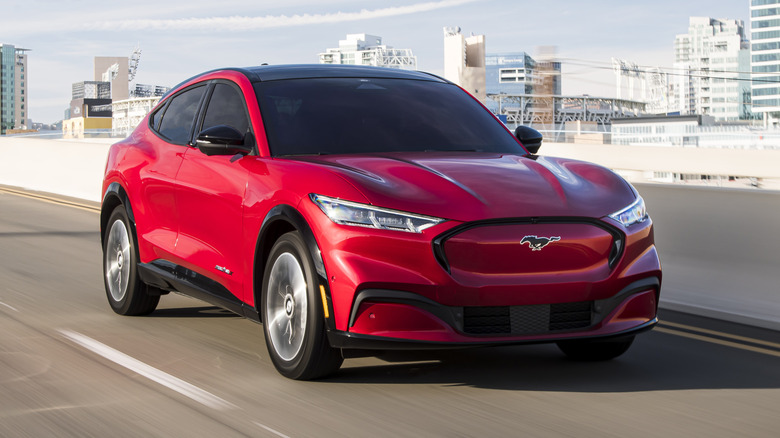
Look past the controversial name and
you’ll find reasons to like the Ford Mustang Mach-E
It is a competent electric vehicle suitable for families, and in its entry-level version, the Mach-E is slightly less expensive compared to the Ioniqu 5. Similar to the Hyundai, Ford provides various configurations of this model ranging from the budget-friendly Mustang Mach-E Select all the way up to the performance-oriented Mustang Mach-E Rally edition. This top-tier variant includes additional horsepower, MagneRide damping technology, and rally-style wheels; however, these upgrades come with certain drawbacks. For instance, it has a minimum price tag starting at $58,995 before adding taxes and fees, along with a reduced driving range down to just 265 miles.
The lower trims of the Mustang Mach-E perform better concerning range, even though they haven’t quite reached the top tier yet. Among them, the Premium version boasts the highest estimated range at 320 miles according to the EPA standards. In comparison, the Select and GT versions provide ranges of 300 miles and 280 miles, respectively. These figures place it roughly on par with the Hyundai Ioniq 5’s capabilities, whose range spans from 245 miles up to 318 miles based on different configurations.
Tesla Model 3
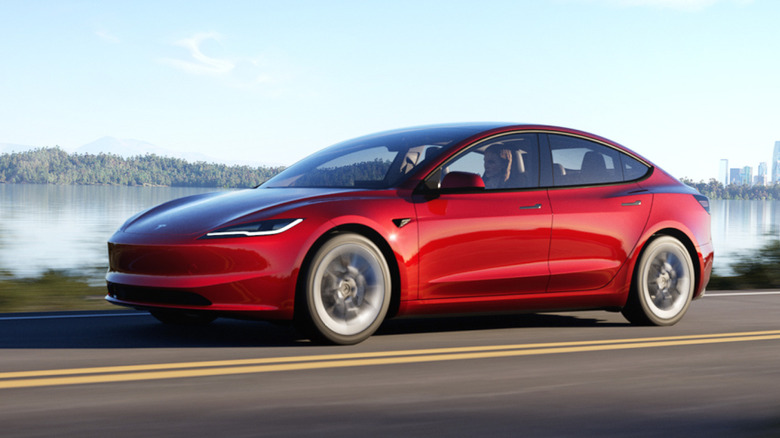
If you don’t mind the increasing amount of baggage that comes with owning a Tesla, the brand’s entry-level model is still an appealing alternative to the Hyundai Ioniq 5. As of writing, the base Long Range All-Wheel Drive variant starts at $42,490, while adding all-wheel drive increases that price to $47,490. The top-spec Performance All-Wheel Drive starts at $54,990. Tesla is known to frequently change its pricing, so those figures are subject to change.
The most affordable model offers the greatest driving range, providing up to 363 miles per charge, whereas the high-performance edition promises an impressive 298-mile range. Most electric vehicle purchasers are likely familiar with what the Model 3 can do. Therefore, determining if a Tesla serves as a practical substitute for vehicles like the Ioniq 5 isn’t just about comparing features anymore. Instead, the focus has shifted toward how much the company’s image may be affected by the conduct of its leader, which doesn’t seem poised to alter anytime soon.
Nissan Ariya
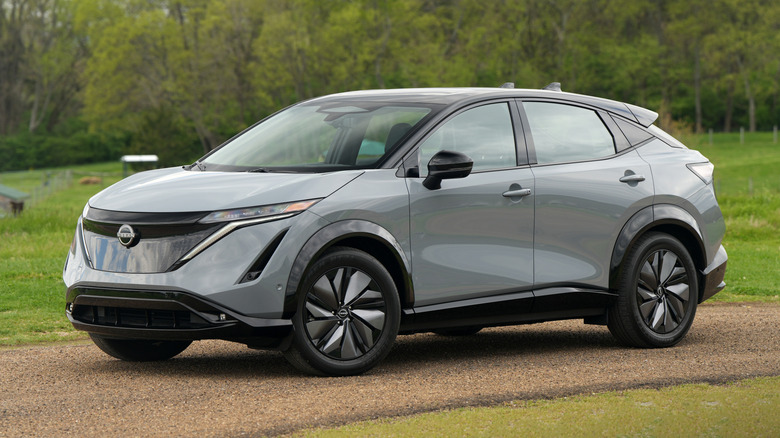
This electric vehicle may not be the most distinctive, engaging, or even the most competent option within its price range, yet potential purchasers should still contemplate buying it.
The Nissan Ariya received a score of 7 out of 10 from us.
In reality, these features may be exactly why someone would choose this vehicle. The Ariya does not stand out significantly among the current plethora of crossover and SUV models with its design, nor does its simple interior make it distinctive within the electric car market. Priced starting just below $40,000, more luxurious versions like the Platinum+ can go as high as at least $54,370. While all-wheel-drive capability is offered throughout different configurations, front-wheel drive comes standard in less expensive variants.
The range differs across various trims, with the Platinum+ version providing up to 267 miles per charge. While this isn’t groundbreaking, it still outpaces some versions of the Ioniq 5. During our test drives, we felt the Ariya was somewhat uninspiring behind the wheel; however, considering most electric crossover purchasers prioritize practicality over performance, they probably won’t mind much. People looking for a fairly roomy, functional, affordable, and not particularly exciting vehicle will find the Ariya fits their needs perfectly.
VW ID.4
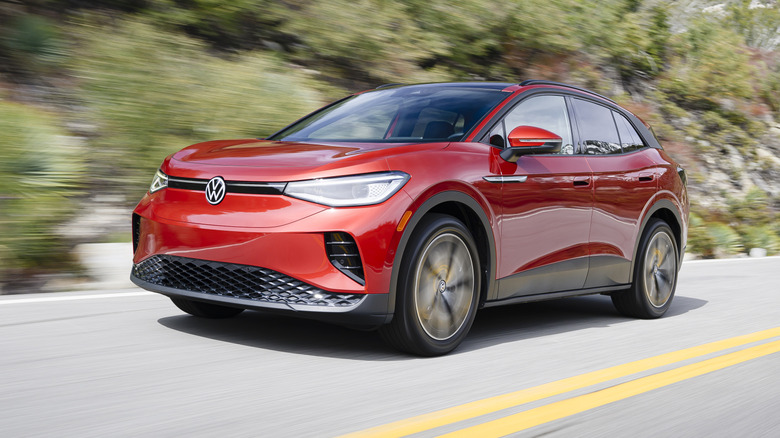
A somewhat ordinary yet possibly attractive option compared to the eccentric Hyundai is the Volkswagen ID.4, priced around $40,000 in entry-level trim. For those who prefer premium features such as leatherette seating surfaces and 12-way power-adjustable seats equipped with a massage function, the top-of-the-line all-wheel-drive ID.4 AWD Pro S comes with a price tag starting at $53,875.
Examining the automobile when this model cycle initially began,
We assigned the ID.4 a score of 8 out of 10.
, commending its comfortable ride and spacious interior but feeling somewhat let down by its initial range. However, over the past two years, Volkswagen has improved the range metrics of the ID.4 models; the top-tier versions can now achieve an impressive 291 miles.
That’s just below the top-performing version of the Ioniq 5, yet more than sufficient for most drivers seeking an urban or suburban runabout. Elsewhere, we found the ID.4 to be characteristic Volkswagen, though positively so, ensuring that current VW owners would feel comfortable with it—even if this is their first electric vehicle.
Hyundai Ioniq 6
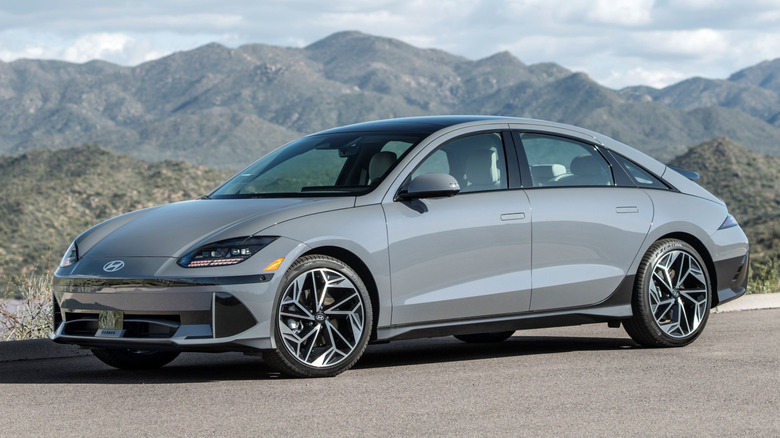
As well as looking at its competition from other brands, it’s worth looking within Hyundai’s range for rivals to the Ioniq 5. Its closest rival is the
Ioniq 6, a blend of style and substance
This version appears much more streamlined compared to its hatchback counterpart and comes at a lower starting price as well. Priced from $38,750, the entry-level model delivers 149 horsepower and can travel up to 240 miles per charge. While this might not be particularly powerful for an electric vehicle, upgrading to the SE trim could provide greater value; it begins at $42,800 and promises up to 342 miles of driving distance when configured with rear-wheel drive. Opting for all-wheel drive with two motors reduces the range somewhat to around 316 miles but increases total power output significantly to 320 horsepower. Even so, the RE variants aren’t slow either, offering 225 horsepower through their rear-wheel drive system.
The SEL and top-spec Limited trims both add desirable extras and a plusher cabin, but bring no extra power and a slight decrease in range compared to the SE. We spent some time with the Ioniq 6 at its launch and noted a few downsides, most notably the car’s reduced rear headroom thanks to its sloping roof. In N form, the Ioniq 5 is also still the clear choice of the two for drivers looking for performance. However, those caveats don’t distract from the fact that the Ioniq 6 is impressive value for money in SE trim.
Toyota GR Corolla

It’s safe to say that most Ioniq 5 buyers will be looking for a sensible, reasonably priced EV, and all the other picks on this list reflect that brief. However, those considering the Ioniq 5 N will likely have a very different agenda. They’ll want maximum driving fun for their cash, and for that, it’s worth considering whether an EV is the right choice.
The
The Ioniq 5 N is undoubtedly an impressive vehicle.
And it is much more enjoyable to drive compared to almost all other electric vehicles within its price range, yet it falls short of delivering the same excitement level as top-performing hatchbacks available today. Specifically, it cannot compete with the exceptional Toyota GR Corolla, which does not rely on excessive power output or artificial gear changes to offer an entertaining driving experience. The GR Corolla benefits from Toyota’s rich rally heritage and performs equally well navigating twisty roads as it does racing around a circuit. Additionally, as noted by us,
10/10 review pointed out
, the Corolla is available with a manual transmission.
Of course, the GR Corolla’s punchy three-cylinder engine isn’t emissions-free like the Ioniq 5 N, but other than that there’s little reason to pick the Hyundai. Electrification is arguably a mixed blessing for enthusiasts, as increasing demand has meant that Hyundai can now justify making fun-to-drive EVs like the Ioniq 5 N in the first place. However, this means cars like the GR Corolla are becoming a dying breed. While it’s still available, enthusiasts shouldn’t miss the opportunity to own one.
Looking for the newest tech and car advancements?
Sign up for our complimentary email newsletter.
For the most recent news updates, detailed guides from experts, and practical advice delivered directly to you, all compiled into a single email.
Read the
original article on ecosundiaries.com
.